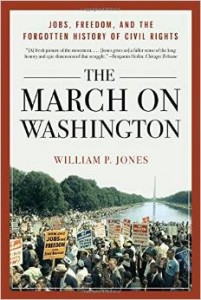The March on Washington: Jobs, Freedom and the Forgotten History of Civil Rights
The opening speech of the day was delivered by the leader of the march, the great trade unionist A. Philip Randolph, who first called for a march on Washington in 1941 to press for equal opportunity in employment and the armed forces. To the crowd that stretched more than a mile before him, Randolph called for an end to segregation and a living wage for every American. Equal access to accommodations and services would mean little to people, white and black, who could not afford them. Randolph’s egalitarian vision of economic and social citizenship is the strong thread running through the full history of the March on Washington Movement. It was a movement of sustained grassroots organizing, linked locally to women’s groups, unions, and churches across the country. Jones’s fresh, compelling history delivers a new understanding of this emblematic event and the broader civil rights movement it propelled.

